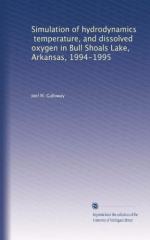|
This section contains 194 words (approx. 1 page at 300 words per page) |
Dissolved oxygen (DO) refers to the amount of oxygen dissolved in water and is particularly important in limnology (aquatic ecology). Oxygen comprises approximately 21% of the total gas in the atmosphere; however, it is much less available in water. The amount of oxygen water can hold depends upon temperature (more oxygen can be dissolved in colder water), pressure (more oxygen can be dissolved in water at greater pressure), and salinity (more oxygen can be dissolved in water of lower salinity). Many lakes and ponds have anoxic (oxygen deficient) bottom layers in the summer because of decomposition processes depleting the oxygen. The amount of dissolved oxygen often determines the number and types of organisms living in that body of water. For example, fish like trout are sensitive to low DO levels (less than eight parts per million) and cannot survive in warm, slow-moving streams or rivers. Decay of organic material in water caused by either chemical processes or microbial action on untreated sewage or dead vegetation can severely reduce dissolved oxygen concentration. This is the most common cause of fish kills, especially in summer months when warm water holds less oxygen anyway.
|
This section contains 194 words (approx. 1 page at 300 words per page) |


